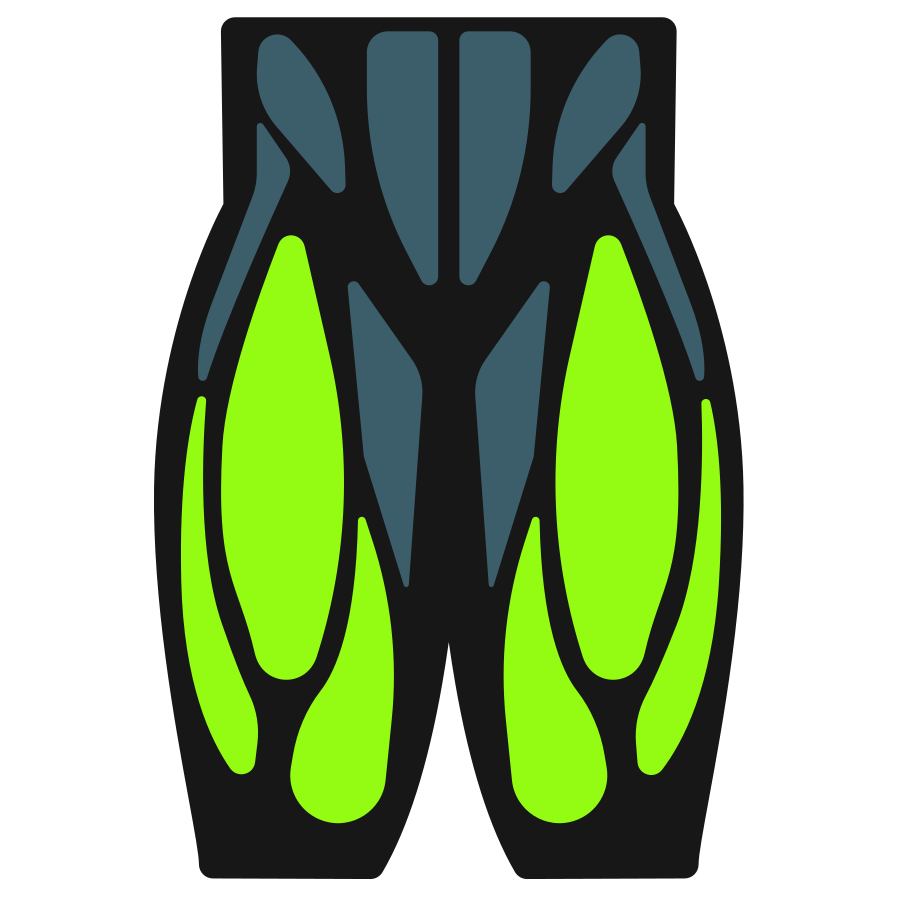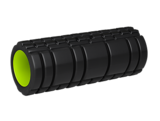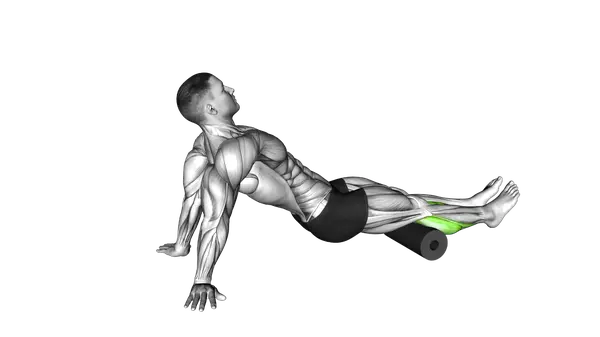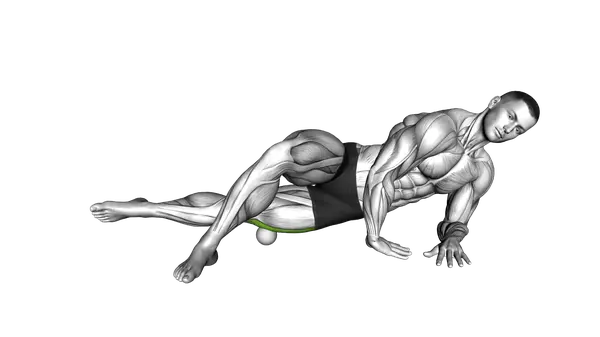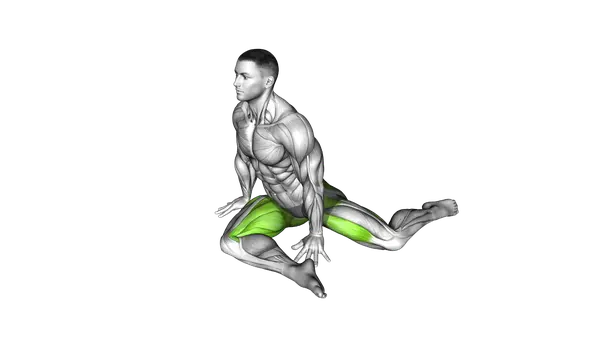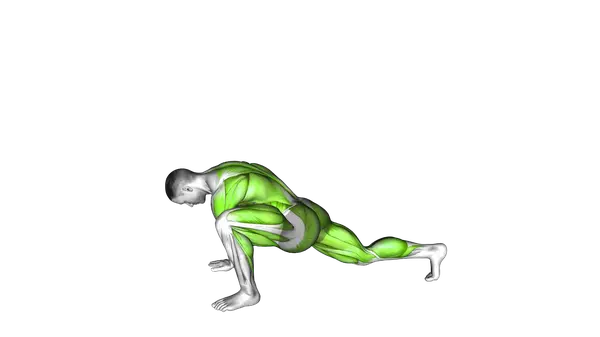Exercise
Foam Roller Tensor Fasciae Latae (TFL) Release
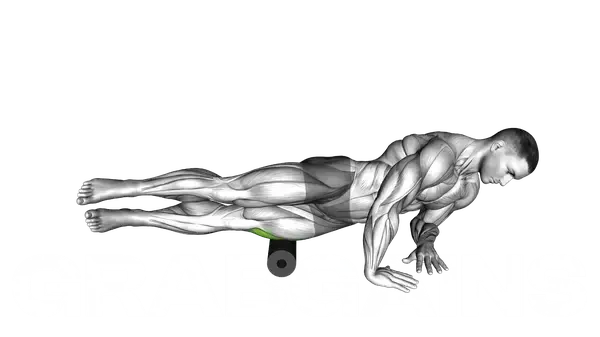
Foam Roller Tensor Fasciae Latae (TFL) Release
How to Perform
- Lie face down and position a foam roller just below your hip bone, angled slightly toward the outer part of your thigh. This placement targets the tensor fasciae latae, a small muscle on the front–outer side of the hip.
- Support your upper body with your hands, keeping your elbows slightly bent and your legs extended straight behind you. Engage your core to maintain control and prevent arching in your lower back.
- Slowly roll your body a few centimeters forward and back so the foam roller moves across the front and side of your hip. Keep the movement small and deliberate, you’re focusing on precision, not speed.
- When you find a tight or tender spot, pause and hold that position for 20–30 seconds while breathing deeply. Allow your bodyweight to sink into the roller and let the muscle relax under the pressure.
- To adjust intensity, shift more of your weight onto your hands to reduce pressure, or allow your hips to lower slightly to increase it. You can also rotate your torso slightly inward or outward to explore different angles of the tensor fasciae latae.
- Continue for about 60–90 seconds, then switch sides and repeat the same controlled, steady motion. After finishing both sides, perform light hip movements such as circles or swings to reinforce mobility and improve comfort.
Important information
- Avoid rolling directly over your hip bone.
- Move slowly and use controlled pressure: this area can be sensitive.
- Keep your core engaged to protect your lower back.
- Stop if you feel sharp pain or numbness.

Foam Roller Tensor Fasciae Latae (TFL) Release
Exercise Details
Primary Muscles
Muscle Groups
Mechanic
Built for progress
Take the guesswork out of training
Create personalized AI-powered workout plans that evolve with you. Train smarter, track every rep and keep moving forward, one workout at a time.





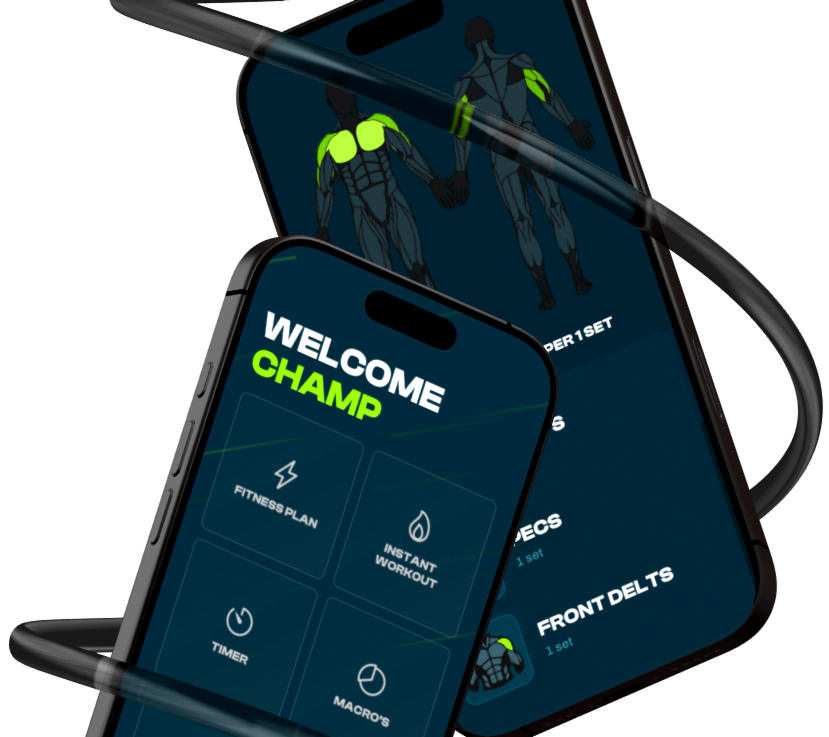
The Foam Roller Tensor Fasciae Latae Release is an effective way to relieve tension in the front and outer part of your hips. This small but important muscle, the tensor fasciae latae, works alongside the hip flexors and the iliotibial (IT) band to stabilize your pelvis during movement. Because it’s active in almost every lower-body exercise and even while walking or sitting, it often becomes overworked and tight. Using a foam roller helps reduce this tension, improving hip mobility and comfort during squats, running, or daily activities.
When used before training, this release prepares your hips for movement by increasing blood flow and reducing stiffness in the connective tissue around the TFL and IT band. After workouts, it helps accelerate recovery by easing muscle tightness and improving circulation in the hip region. Regularly including this technique in your mobility routine can help prevent imbalances and reduce discomfort around the hips and knees.
The strength of this mobility exercise lies in its simplicity. By targeting the tensor fasciae latae directly, you’re not only improving local flexibility but also promoting better movement patterns through the entire hip complex. Releasing tension in this area often eases strain on neighboring muscles such as the glutes, hamstrings, and lower back, leading to smoother, more efficient movement.
Whether you’re new to foam rolling or experienced with recovery tools, the Foam Roller Tensor Fasciae Latae Release is easy to learn and self-regulated — you control the pressure and range. A few minutes of consistent practice can lead to noticeably freer hips, improved posture, and a lower risk of overuse injuries, proving that small, targeted recovery habits can make a big difference in overall performance.
FAQ - Foam Roller Tensor Fasciae Latae (TFL) Release
Yes, even if only one side feels tight. Imbalances often occur between the left and right hips, so releasing both sides helps maintain even mobility and stability across the pelvis.
Use it before workouts to improve hip mobility and reduce tension that limits movement, or after workouts to help recovery and relieve tightness. Many athletes include it in both their warm-up and cooldown routines.
You can perform this release three to five times per week, or even daily if your hips feel restricted. Keep each session short — one to two minutes per side is enough. Overdoing it can irritate the area rather than help.
The tensor fasciae latae is a small muscle located on the outer front side of your hip. It helps stabilize your pelvis and assists with movements like hip flexion, abduction, and internal rotation. It also connects to the iliotibial (IT) band, influencing the tension along the outer thigh.
Tightness in the tensor fasciae latae often comes from prolonged sitting, weak glute muscles, or repetitive activities like running and cycling. When the glutes don’t engage properly, this small muscle overworks to stabilize your hip, leading to stiffness and discomfort.
